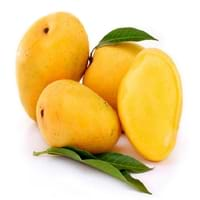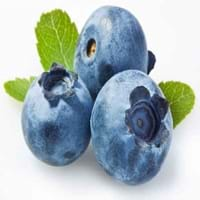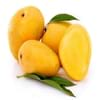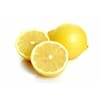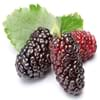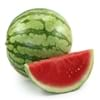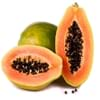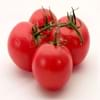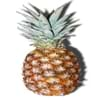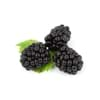Health Benefits
Cancer prevention, Cures fatigue, Heart care, Prevents strokes
Anti depressant, Cancer prevention, Heart care, Increases metabolic rate, Prevents constipation
General Benefits
Anti oxidant properties, Boosts immune system, Controls blood pressure, Digestive aid, Improves eye vision, Maintains healthy cholesterol level
Anti oxidant properties, Controls blood pressure, Digestive aid, Eye care, Helps in weight loss, Strengthens bones
Skin Benefits
Anti-aging benefits, Brightens and lightens complexion, Skin cleansing, Skin rejuvenation, Treatment of acne, Treatment of blackheads, Treatment of dark spots
Anti-aging benefits, Reduces wrinkles, Skin rejuvenation, Skin revitalization, Treatment of acne, Treatment of dark spots
Hair Benefits
Good conditioner, Prevents hair loss, Treatment of dandruff
Promotes longer and healthier hair, Regulates hair growth
Allergy Symptoms
Abdominal pains, Breathing difficulty, Diarrhea, Runny nose, Sneezing, Swelling of mouth, tongue or lips, Watery eyes
Abdominal pains, Anaphylaxis, Breathing difficulty, Coughing, Decrease in blood pressure, Diarrhea, Eczema, Fainting, Hives, Lightheadedness, Nausea, Runny nose, Sneezing, Swelling of mouth, tongue or lips, Vomiting, Wheezing
Side Effects
Increase in blood sugar level, Diarrhoea, Weight gain
Affects blood glucose levels, Decrease in blood sugar levels, Allergic reaction
Best Time to Eat
Don't consume at night and before bed, Eat the fresh ones, avoid mixing with any other foods, don't eat after meal., Morning time (before lunch)
As a snack in the late afternoon, Eat the fresh ones, avoid mixing with any other foods, don't eat after meal., Morning time (before lunch)
Vitamin B5 (Pantothenic Acid)
Vitamin C (Ascorbic Acid)
Vitamin K (Phyllochinone)
Phytosterol
Not Available
Calories in Fresh Fruit with Peel
Not Available
Calories in Fresh Fruit without Peel
Not Available
Season
Spring, Summer
Summer
Varieties
Alphonso, Valencia Pride, Badami, Chaunsa, Nam Dok Mai, Glenn, Sindhri, Madame Francique, Kesar and Keitt
Pink Lemonade, Bluecrop, Bluejay, Blueray, Bonus, Duke, Elliott, Jersey, Nelson, Northland, Patriot, Sierra, Spartan, Northcountry, Northsky and Premier and Climax
Color
Orange, Red, Yellow
Blue, Indigo
Inside Color
Yellow
Greyish-white
Origin
Southern Asia
North America
Soil Type
Clay, Loam, Sand
Porous, Well-drained
Climatic Conditions
Humid, Warm to hot climate
Cold
Facts about
- A mango tree can bear fruits even after the age of 300 years.
- Height of a mango tree can be as high as 100 feet.
- In India, mango is known as a symbol of love. Also, a mango basket is considered as the sign of friendship.
- National blueberry month is July as blueberries are harvested in July.
- They are the official berries of Nova Scotia, Canada.
- Blueberries are used as natural food color and can protect you from memory loss.
Top Producer
India
United States of America
Other Countries
Bangladesh, Brazil, China, Indonesia, Mexico, Nigeria, Pakistan, Philippines, Thailand
Canada, Germany, Netherlands, Poland
Top Importer
United States of America
United States of America
Top Exporter
Mexico
Chile
Botanical Name
Mangifera Indica
Vaccinium myrtillus
Synonym
Not Available
Not Available
Subkingdom
Tracheobionta
Tracheobionta
Division
Magnoliophyta
Magnoliophyta
Class
Magnoliopsida
Magnoliopsida
Subclass
Rosidae
Dillenhidae
Order
Sapindales
Ericales
Family
Anacardiaceae
Ericaceae
Genus
Mangifera
Vaccinium
Species
M. indica
V. myrtillus
Generic Group
Cashew
Heath
Difference Between Mango and Blueberry
We might think that Mango and Blueberry are similar with respect to nutritional value and health benefits. But the nutrient content of both fruits is different. Mango and Blueberry Facts such as their taste, shape, color, and size are also distinct. The difference between Mango and Blueberry is explained here.
The amount of calories in 100 gm of fresh Mango and Blueberry with peel is Not Available and 57.00 kcal and the amount of calories without peel is 60.00 kcal and Not Available respectively. Thus, Mango and Blueberry belong to and category.These fruits might or might not differ with respect to their scientific classification. The order of Mango and Blueberry is Sapindales and Ericales respectively. Mango belongs to Anacardiaceae family and Blueberry belongs to Ericaceae family. Mango belongs to Mangifera genus of M. indica species and Blueberry belongs to Vaccinium genus of V. myrtillus species. Beings plants, both fruits belong to Plantae Kingdom.
